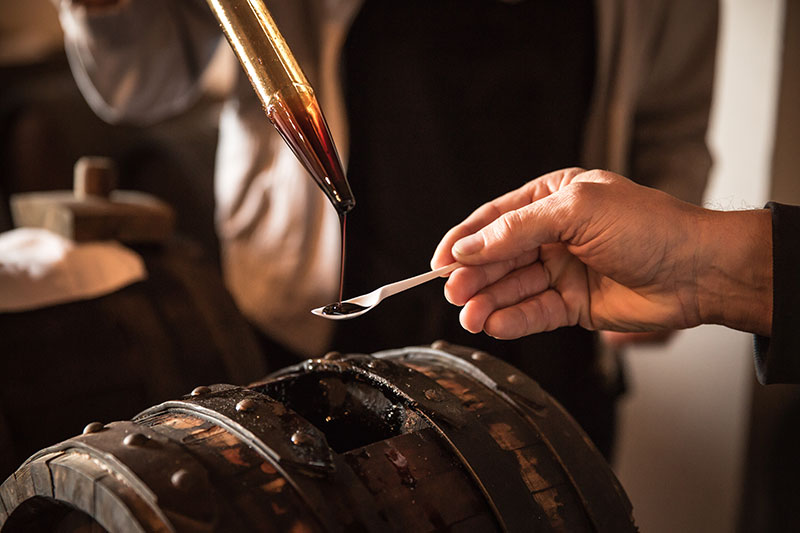A research conducted by the Italian CNR (”Consiglio Nazionale delle Ricerche” - National Research Council) has had as its objective the application of cavitation technology to cooking traditional balsamic vinegar.
In the production of traditional balsamic vinegar, the cooking of grape must with at least 15° Brix (1° Brix corresponds to 1-2% by weight of sugar), takes place at natural pressure, with direct fire, in containers open for about 12-24 hours at a minimum temperature of 30° C, until the total mass is reduced to about 2/3.
All additives are banned.
Too high cooking temperatures could lead to unwanted crystallization of sugars with unwanted slowdowns of alcoholic fermentation and consequent production of furanic compounds; so the most recent trend is that of cooking between 75 and 90° C, for no more than 14 hours, with a reduction of the must up to 28-30° Brix.
The process of cooking grape juice to obtain reduced cooked must and the subsequent formation of the organic species that characterize it represent an extremely delicate stage due to the many variables involved that are linked to the different chemical and chemical-physical transformations which take place inside the matrices during the cooking phase.
In particular, the decrease in the percentage of water during cooking can lead to the formation of furfurals: compounds that not only negatively connote the final product but which are even harmful to the health of the consumer as they are potentially carcinogenic.
Proper cooking of the must therefore represents the only way to obtain a good traditional balsamic vinegar.
Consequently, cavitation-assisted cooking could give excellent results because the heating of the liquid is homogeneous, as the liquid mass is not heated by heat sources such as flame or electrical resistance, but it is the same mass of liquid that heats up on its own, preventing localized caramelization formations.











